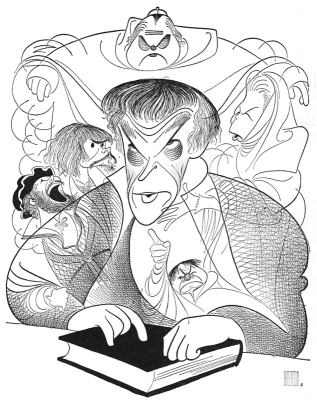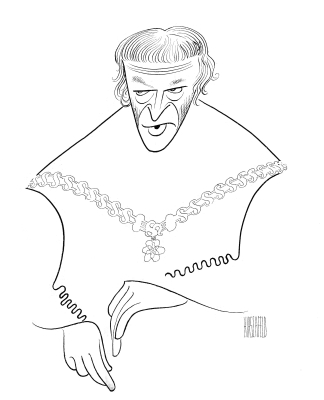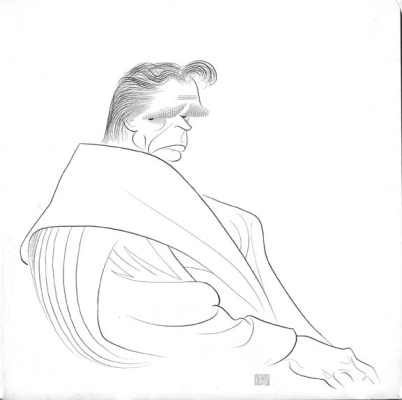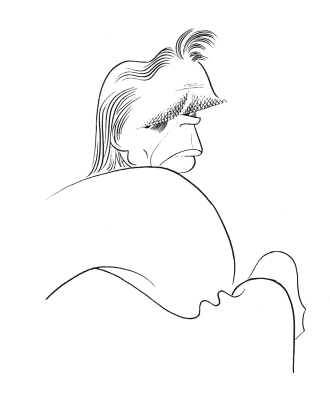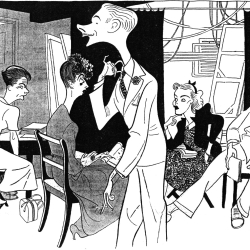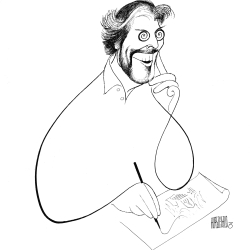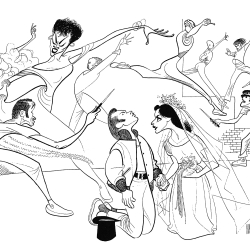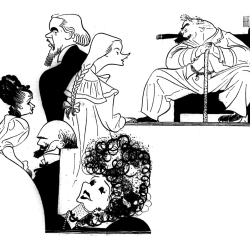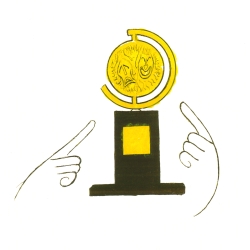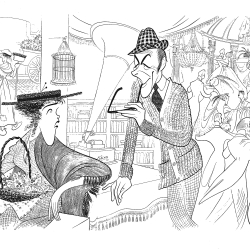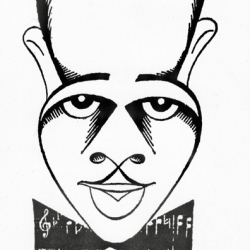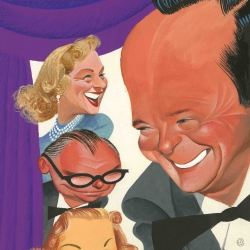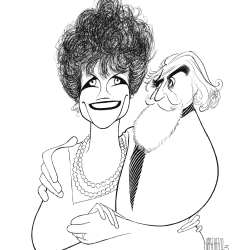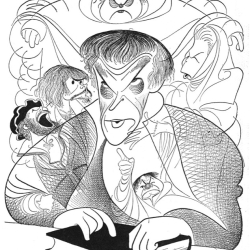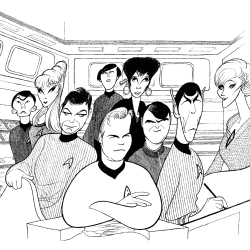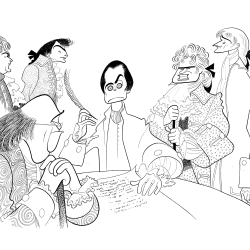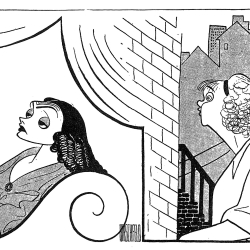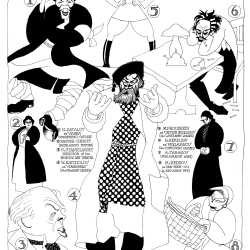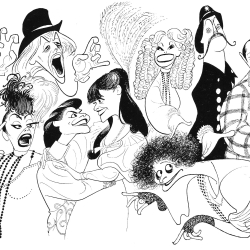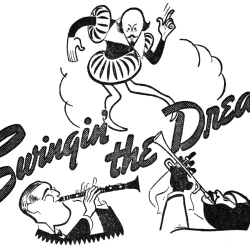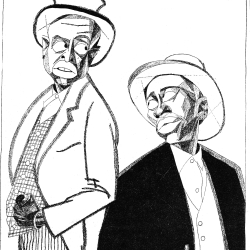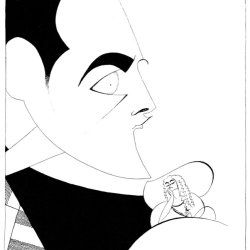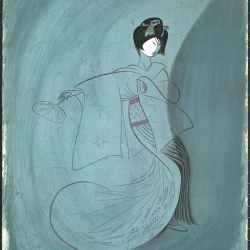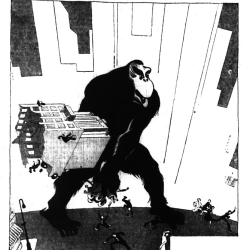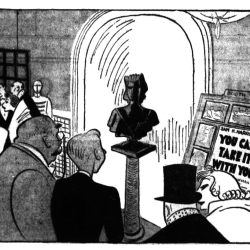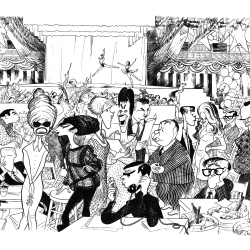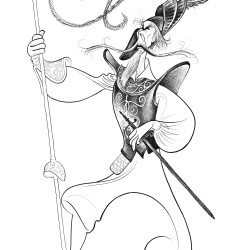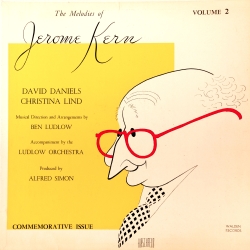A Man for All Seasons
The story of a medieval man who was executed by a king would seem to have little in common with early 1960s America, but it resonated with the audience in ways that may be hard to understand for some today. Robert Bolt’s play about Sir Thomas More, the 16th-century Lord Chancellor of England who refused to sign a letter asking Pope Clement VII to annul King Henry VIII of England's marriage to Catherine of Aragon and resigned rather than take an Oath of Supremacy declaring Henry VIII Supreme Head of the Church of England. More was eventually beheaded by Henry VIII for this “treason,” although More never spoke the reason why he resigned and remained loyal to the king until his end. In the aftermath of McCarthyism, a man penalized for what he thought rather than his deeds spoke all too clearly to audiences.
The play had been a modest hit in London, before opening on November 22, 1961 on Broadway. Hirschfeld did not herald its arrival with a traditional Sunday drawing, but in March 1962, he created a composite of five individual drawings of actors in roles from shows coming from England, including Paul Scofield as More in A Man For All Seasons. “Transatlantic Travelers” was how the Times described the actors, Hirschfeld simply labeled it a “London Invasion” in his hand written captions on the drawings. The play was a huge hit in America, and the production won six Tony awards including Best Actor, Best Play, and Best Direction.
Four years later, the play was adapted for film, and the Times asked for a drawing. After nearly 40 years of contributing to the paper, his editors had finally decided to let Hirschfeld draw films, and the artist did not disappoint with this assignment. He drew Scofield, re-creating his stage performance, virtually engulfed by the other characters of the drama including Orson Welles as Cardinal Wolsey and Wendy Hiller as Lady More. The film would go on to win six Oscars, again for Best Actor, Best Director, and also Best Film.
In 1973, Brooks Atkinson selected the play for the book, The Lively Years, his overview of the socially significant plays of the last half-century. The book included more than 50 new Hirschfeld drawings, including one of Scofield in the title role of the play.
In 1977 and 1979, IBM commissioned Hirschfeld to create two new drawings of Scofield in the role for full-page newspaper advertisements for their sponsored broadcasts of “Movies To Remember.”
55 years ago, it was unlikely that as Hirschfeld watched the opening night of A Man For All Seasons on Broadway that he would realize that he would draw Scofield five times in the role over the next two decades. He would draw the actor only three other times. Twice in 1964 in both stage and screen roles, and finally in 1996 as part of a composite of London stage productions. It seems that Hirschfeld too could be called a man for all seasons.
David Leopold
